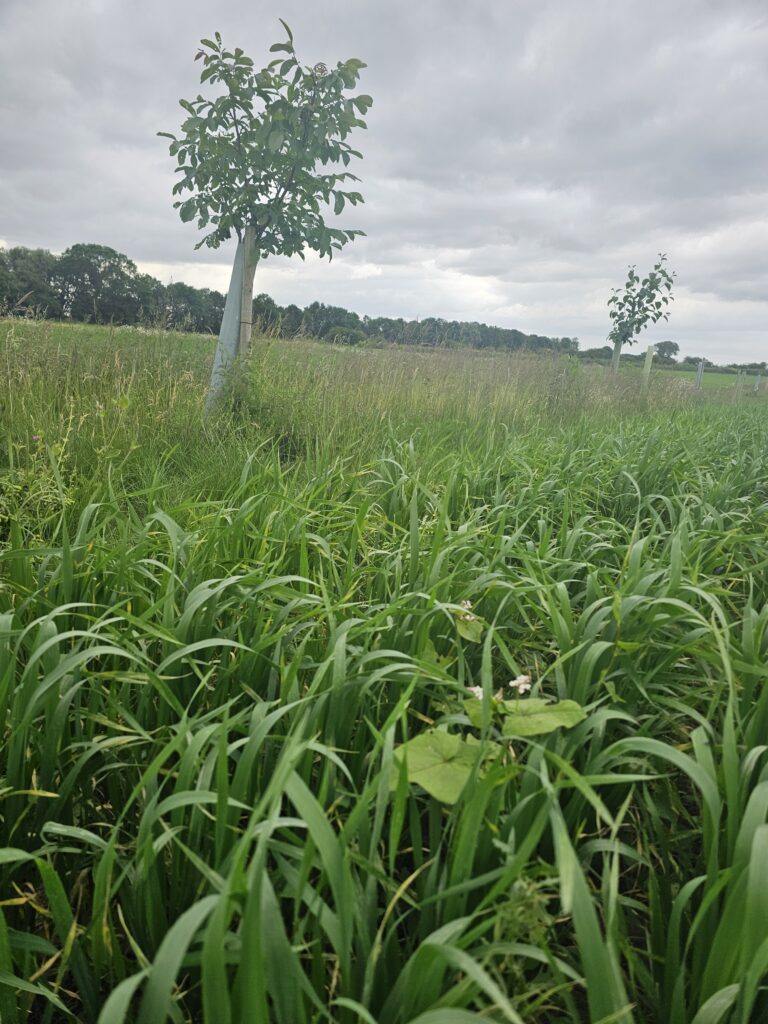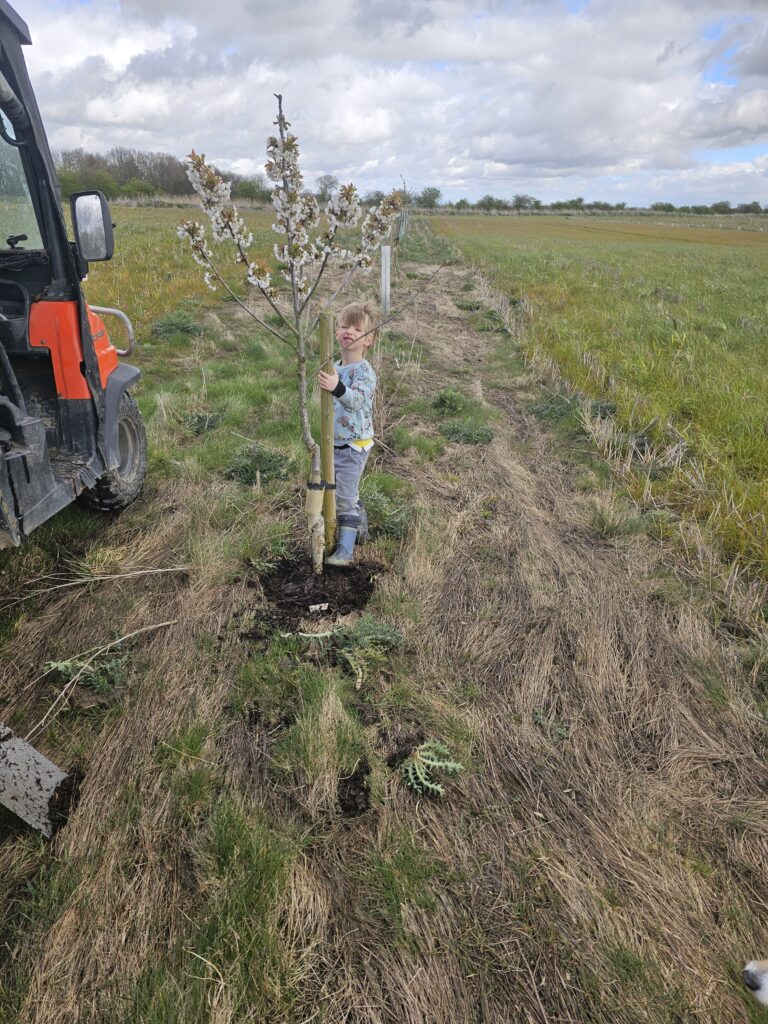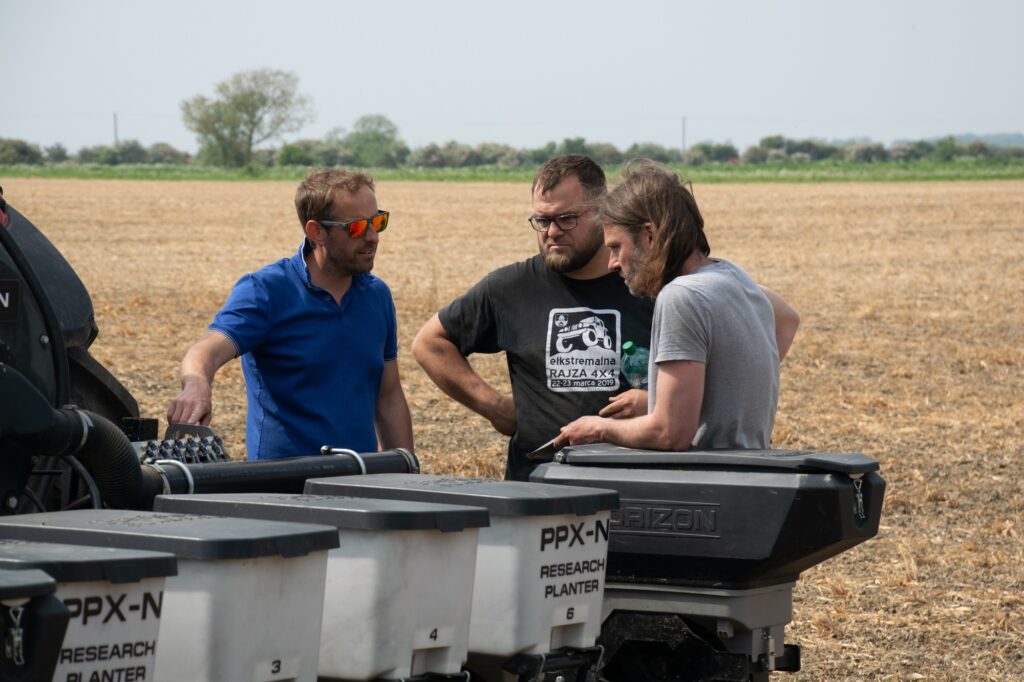Year 5 into my farming career, is it getting easier…?
Simple answer is no; however, I feel a lot more relaxed about the annual cycle of ups and downs, and after 5 years at it, with countless droughts and floods I’m definitely battle hardened and most importantly the farm is building diversity and resilience.
Financially half our farm is mortgaged, and its variable rate (ouch!), so it’s been tight! My mother and father live off the farm income and I draw mine from other businesses. I genuinely take my hat off to every farmer the past few years as I have learnt just how hard it all is especially when debt/interest climb, every £1 spend has to count and we’ve slashed costs to death.
As I write this, I couldn’t be happier generally with how the farm looks given the circumstances. Autumn 2023 we drilled 90 ha of WW and 35ha Winter Triticale. Within 24 hours of finishing drilling we have just over 110mm of rain in 4 days. The wheat was not good enough to keep and given a rare opportunity to re-drill on the frost in February we sprayed off and re-drilled, which proved to be the right decision. Our Triticale (some destined for AD and some grain) survived and prospered, I love the stuff! Its resilient, more aggressive, likes our heavy clay/silt, and you can sell it as feed wheat (oops). Its around 15% cheaper to grow than WW but also generally yields less by a similar factor, but it’s a safe bet for me and I want to grow more of it, the issue is the market/demand, I can confirm triticale bread isn’t great, but blended in its fine!
We decided to grow 60 hectares of spring wheat blend for Wildfarmed with a buckwheat/clover companion crop, this was mainly in our agroforestry area. So far so good, we have grown for Wildfarmed for now 3 years and although it’s no silver bullet financially, I’m growing more and more fond of the brand and the system. Our spring crop was a 4-way blend, currently it’s holding up well to Rust (a big worry), its had 80KG of N and just doing first SAP tests. We have a stack of SFI payments on this amounting to £485/ha including the agroforestry, but I hope next year this can be up to £885/ha when we add the low input cereal option and convert to the strip system. I think in the long term we will need a multi-use interrow management tool if we grow more and more crops like this. Which has my brain spinning to give the Horizon engineers their next headache! Overall, we hope for an output including SFI of around £1850-2000/ha from a very low input.


A quick agroforestry update, I have shown many farmers around it, and I love doing so. A few have then planted up themselves so that’s very rewarding. The walnuts are finally waking up and hazels I hope will be waist high by the end of the summer (they should be 1.5X this size by now but establishing trees in open areas is always hard, my advice is as others say, plant less and look after fewer trees better! I listened to Sarah Singla speak in Sweden this week and she said studies show the perfect field size is 3-4hectreas from a biodiversity standpoint, this fits well with my alleys!
Our maize all went in well, we grow 40 hectares and I decided to roll the dice and drill companion crops at the same time as planting with some modifications we made at Horizon. I have some maize with faba beans 25cm from the crop, and some with clover, millet, buckwheat. We can claim the SFI, direct drilling, pre maize cover crop and in future the sustainable maize growing options which could accumulate to circa £350/ha. The idea being that we try to be between £1750-£2000/ha.


I am not yet sure how the companions will affect the maize; we have some without a companion to compare. I want to find out if drilling a companion (or ryegrass like some do) at time of drilling, either 25 or 37.5cm from the crop restricts it. Or if you do have to wait till later in the season to under sow. Some of this research is for me as a farmer and some with my Horizon hat on. Herbicides and weeds and how we manage that Is the challenge also, it will be interesting how certain clovers etc. stand up if we need a herbicide. Generally, we have far less weed pressure in strip till.


